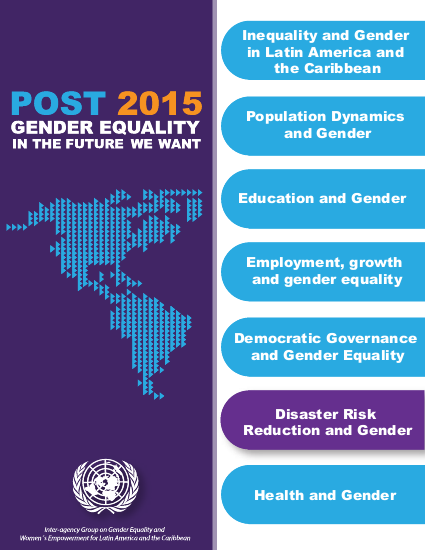
The disasters provoked by the occurrence of natural phenomena in the Latin America and Caribbean region (LAC) are among the most frequent and intense in the world. Lately, for example, they have intensified with a significant increase in the frequency of floods, droughts, and hurricanes (266%, 360%, and 521%, respectively) , while 75% of the region’s population lives in zones at risk to these types of disasters. The accumulated impact of disasters in LAC between 1970 and 2009 amounts to $356,672.4 million dollars, which represents almost 24% of the region’s total GDP. In 2010 alone, they caused the death of 225,684 people and around 14 million people have been affected . Additionally, the tendency is for these disasters to center in the urban zones (between 4 and 7 out of every 10 disasters occur in urban centers with a population of less than 100,000 inhabitants). Research and data show that the disasters reinforce, perpetuate, and increase the gender inequalities, widening the gap between men and women in the world’s most unequal region. In spite of this, only 20% of the countries report advances in incorporating gender into Disaster Risk Reduction (DRR). Only 23% report that they have adopted measures to incorporate the gender approach in recovery and 15% have vulnerability and capacity evaluations broken down by sex. Regarding the normative framework, only eight countries mention the gender theme in their Disaster Risk Management National Policies and they do so as a cross-cutting axis . Meanwhile in the region, only three women appear as responsible for the entities in charge of Risk Management. However, advances are being made in the articulation of these themes. Some countries are in the process of implementing agreements between the National Equality mechanism and the entity responsible for Risk Management and/or Emergency Preparedness. Likewise, a road map is being formulated in Central America to apply the gender actions of the Integrated Disaster Risk Management Policy for Central America and the Regional Strategy of Climate Change.
